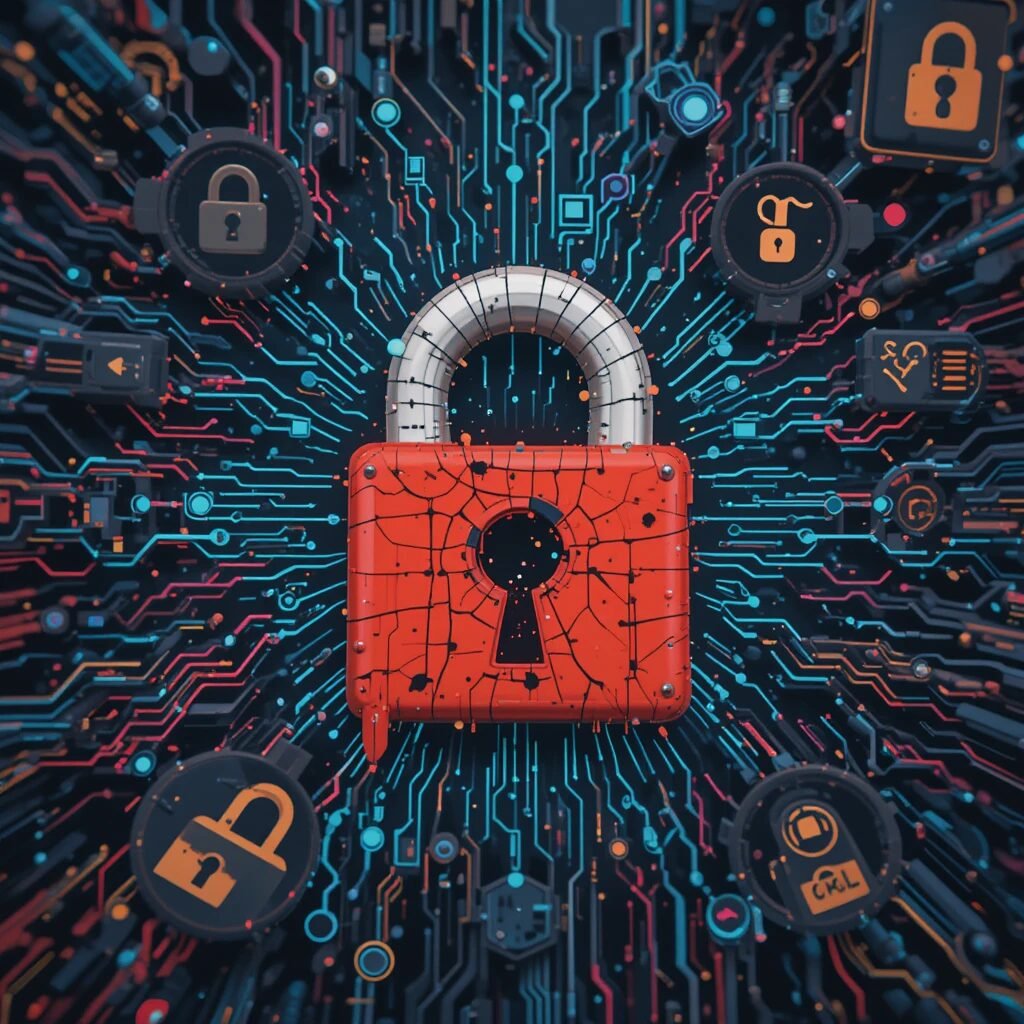The Rising Tide of Ransomware Attacks
The frequency of ransomware attacks has escalated dramatically in recent years, presenting a formidable challenge for organizations across various sectors. According to insights from the 2025 Ransomware Report, the current landscape is marked by more sophisticated tactics employed by cybercriminals. These criminals are not only leveraging advanced technologies but also adapting their strategies to exploit vulnerabilities in emerging technologies and remote work environments. As organizations adopt cloud services and digital transformations, the attack surface has broadened, allowing hackers greater opportunities to infiltrate systems.
One key development noted in the report is the increased targeting of critical infrastructure and essential services. Attackers are now opting for high-impact targets that can lead to significant disruption, thereby compelling organizations to meet ransom demands. This shift in target selection highlights the strategic nature of contemporary ransomware attacks, where the potential for chaos is virtually guaranteed. The implications of such attacks extend beyond financial loss, often resulting in reputational damage and legal ramifications for the impacted entities.
Furthermore, the report accentuates a concerning trend where attackers are increasingly utilizing data exfiltration before deploying ransomware. This dual threat, involving both encryption of files and the threat of data leakage, significantly intensifies the pressure on victims. Organizations that previously might have chosen to recover from backups now face the harsh reality of publicly facing a data breach, leading to a complex decision-making process regarding whether to pay the demanded ransom.
With these evolving tactics and the rising tide of attacks, organizations must adopt proactive measures that include robust cybersecurity strategies, incident response planning, and employee training programs. The findings from the 2025 Ransomware Report serve as a stark reminder of the necessity for continuous adaptation to counter these threats effectively and safeguard both data and operational continuity.
Decoding the Attack Cycle: What Happens to Stolen Data?
The lifecycle of a ransomware attack is a complex process that begins with an initial breach, often occurring via phishing emails or unpatched software vulnerabilities. Once attackers gain access to a network, they typically move laterally to identify valuable data, including sensitive files that may be critical for an organization’s operations. During this phase, the attackers may spend time gathering intelligence, mapping the network, and determining the most effective data to encrypt.
After securing their foothold, the next stage involves data encryption. Ransomware encrypts files, rendering them inaccessible to the organization, effectively crippling operations. This encryption process can occur rapidly, with some ransomware strains capable of encrypting thousands of files within minutes. Following the encryption, attackers initiate their extortion tactics, often demanding a ransom payment in cryptocurrency to provide the decryption key. The use of cryptocurrency offers anonymity, making it difficult to trace the transactions.
The consequences of stolen data extend beyond immediate accessibility issues. Organizations face the risk of data leakage if the ransom is not paid. Attackers may threaten to release sensitive information on public platforms, posing significant reputational damage and legal ramifications. Such leaks can compromise customer information, financial data, or proprietary business documents, exposing an organization to regulatory fines and loss of consumer trust.
Real-world incidents illuminate these risks effectively. For example, the infamous Colonial Pipeline attack not only caused significant disruption to fuel supply but also led to sensitive operational information being threatened with exposure. Similarly, healthcare organizations have also experienced significant breaches, where patient data was at risk, leading to both ethical concerns and dire operational implications. Understanding the complete attack cycle, particularly the fate of stolen data, is vital for organizations to fortify their defenses against ransomware threats.
The Economic Fallout: Key Statistics and Insights
Ransomware attacks have emerged as a critical threat to organizations across various sectors, bringing with them significant economic repercussions. According to the 2025 Ransomware Report, the average ransom demand rose to approximately $2.3 million, illustrating a concerning upward trend in the financial burden associated with these cyber threats. Businesses are increasingly finding themselves at the mercy of cybercriminals, who exploit vulnerabilities within their systems for monetary gain.
The report further reveals that nearly 60% of the organizations targeted by ransomware chose to pay the ransom in an effort to recover their compromised data. However, this action often leads to unexpected consequences, such as repeat attacks and the normalization of such demands within the industry. On average, organizations that paid the ransom experienced an additional loss of $1.4 million in downtime, recovery, and legal costs, underscoring the extensive financial implications that follow an initial ransom payment.
Small and medium-sized enterprises (SMEs) are particularly vulnerable, as they generally lack robust cybersecurity measures in comparison to larger firms. The 2025 Ransomware Report indicates that 70% of SMEs that faced a ransomware attack were forced to close their operations permanently within six months of the incident. This statistic highlights the devastating impact that ransomware can have on businesses lacking sufficient resources or recovery plans.
Furthermore, the economic fallout extends beyond immediate financial losses. Reputational damage and loss of customer trust are critical factors that organizations must consider. Victims of ransomware may grapple with long-term consequences, as customers may choose to engage with competitors who are perceived as more secure. Therefore, a comprehensive understanding of ransomware’s economic impact is crucial for all organizations, regardless of size, in order to formulate effective strategies to mitigate risks and enhance cybersecurity posture.
The Human Factor: Emotional and Psychological Impact of Ransomware
Ransomware attacks not only compromise organizational data and operations but also inflict significant emotional and psychological stress on IT and security teams. The pressure faced by these professionals is overwhelming, often leading to heightened levels of anxiety, fear, and burnout. The immediate aftermath of a ransomware incident can create a chaotic environment where quick decision-making is essential, adding to the teams’ stress. Many professionals report feelings of inadequacy and guilt, fearing they could have prevented the breach or mitigated its impact more effectively.
Research indicates that prolonged exposure to such high-stress situations can contribute to mental health issues. IT specialists dealing with ransomware attacks frequently express concerns about job security and the potential ramifications of their actions within the organization. The stigma attached to incident response failures can discourage open dialogue, leading to increased isolation. These emotional struggles extend beyond the workplace, affecting personal relationships and overall quality of life.
Expert commentary highlights the necessity of addressing the psychological toll associated with cybersecurity incidents. It is essential for organizations to foster an environment where employees feel supported, encouraging open communication regarding their experiences and feelings during crises. Providing access to mental health resources, such as counseling and peer support programs, can significantly alleviate some of the emotional burdens faced by those on the front lines of ransomware attacks.
The human aspect of cybersecurity threats is critical to understanding the broader implications of ransomware. As cyber threats continue to evolve, prioritizing mental well-being within IT and security teams is essential for maintaining a resilient workforce. By acknowledging the emotional impact of these incidents, organizations can better equip their teams to handle cyber crises while promoting a culture of empathy and support.




